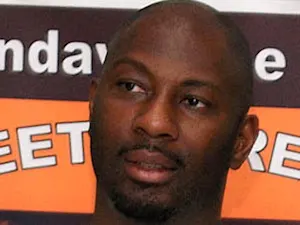
Where Does the Thumbs-Up Gesture Come From?
That 👍 emoji you just sent? It's more than just a modern-day "all good" symbol — it's actually got a rich history, full of misunderstandings and changes over time. Let's explore the interesting story of the thumbs-up gesture and how it became the friendly sign we know today.
The Movie 'Gladiator' Got It Wrong
If you saw the movie "Gladiator," you may not be surprised to hear that historians can trace the thumbs-up gesture back to ancient Rome during gladiator fights.
However, unlike the movie, a thumbs-up from the ruler did not mean the gladiator would live, and thumbs-down didn't foreshadow his death — the Latin phrase "pollice verso," meaning "turned thumb," was actually misinterpreted over time.
In reality, historian Anthony Corbeill says that in ancient Rome, pressing the thumb to the top of the fist meant sparing a gladiator, while a thumbs-up likely signified a death sentence — the opposite of what you would think.
The Artist Gérôme Also Got It Wrong
One source of confusion involved artist Jean-Léon Gérôme and his popular painting "Pollice Verso" (1872). The painting depicts a packed arena, with the crowd calling for death of the defeated gladiator with downturned thumbs — an inaccurate representation of reality. Reportedly, "Gladiator" director Ridley Scott used this artwork as inspiration for his movie.

Keep Calm and Thumbs-Up
So, if the Romans' thumbs-up symbol had a negative connotation, how did the meaning get flipped on its head? Actually, we can trace the first positive meaning of the thumbs-up gesture back to the early 1900s.
In 1917, Arthur Guy Empey, an American who served in the British army during World War I, wrote about the thumbs-up as a positive symbol in his book "Over the Top." Empey mentioned British soldiers used the thumbs-up to indicate, "Everything is fine with me" — so we know this was happening at least in the military ranks.
Ground Control to Major Tom
But who actually decided the thumbs-up gesture meant "all good?" Some historians believe the symbol may have begun with early pilots. They may have used it to communicate with ground crews during pre-flight checks, showing they were ready for takeoff. While not proven, this idea adds another layer to the gesture's history.
'Til They Come Marching Home
Fast forward a couple of decades, and the thumbs-up gesture surged into popularity during World War II. While the Andrews sisters sang "Don't Sit Under the Apple Tree," American soldiers used the symbol to indicate everything was A-OK. This helped spread the gesture around the world, making it a common sign of approval and positivity for many cultures.
Do You Really, Really 'Like' Me?
By the late 20th century, most of the world recognized the thumbs-up gesture. A survey of 1,200 people from 40 locations found that 738 of them (61.5%) agreed it had a positive meaning.
The rise of the internet and social media platforms like YouTube and Facebook helped enshrine the thumbs-up symbol in the global lexicon. The "like" button, often shown with a thumbs-up icon, made this gesture a universal sign of approval.
But Be Careful Where You Use It 👍
Even though today the thumbs-up gesture mostly has positive connotations, be aware that it can mean different things in other cultures.
For example, in some Middle Eastern and West African countries, giving a thumbs-up comes off quite rude — like giving someone the middle finger in Western cultures. Similarly, people who live in certain parts of Latin America and Greece might take offense to this gesture.
So, the next time you text a 👍, remember you're not just saying OK — you're actually giving a nod to centuries of history. Just be careful where you point it!
References: Where Does the 'Thumbs-Up' Gesture Really Come From? | Dispelling Some Myths: Thumbs Up | 5 American Behaviors Considered Rude in Other Parts of the World | Thumbs-Up: The Fascinating Origins of Everyday Hand Gestures | Thumbs-Up: A Historical Mistake























